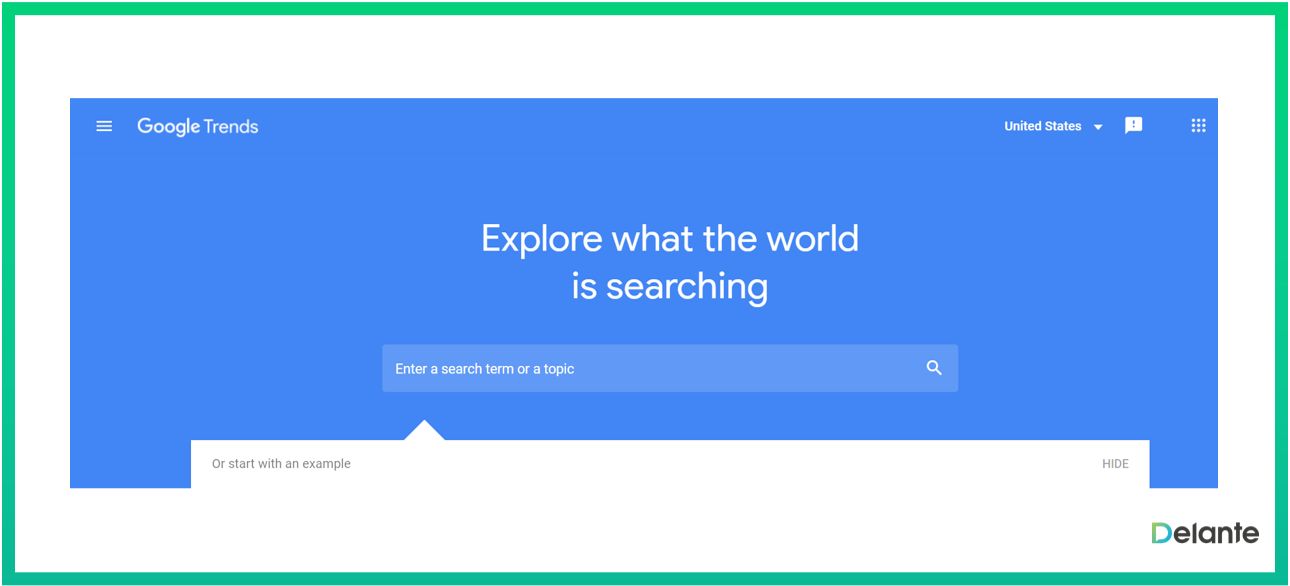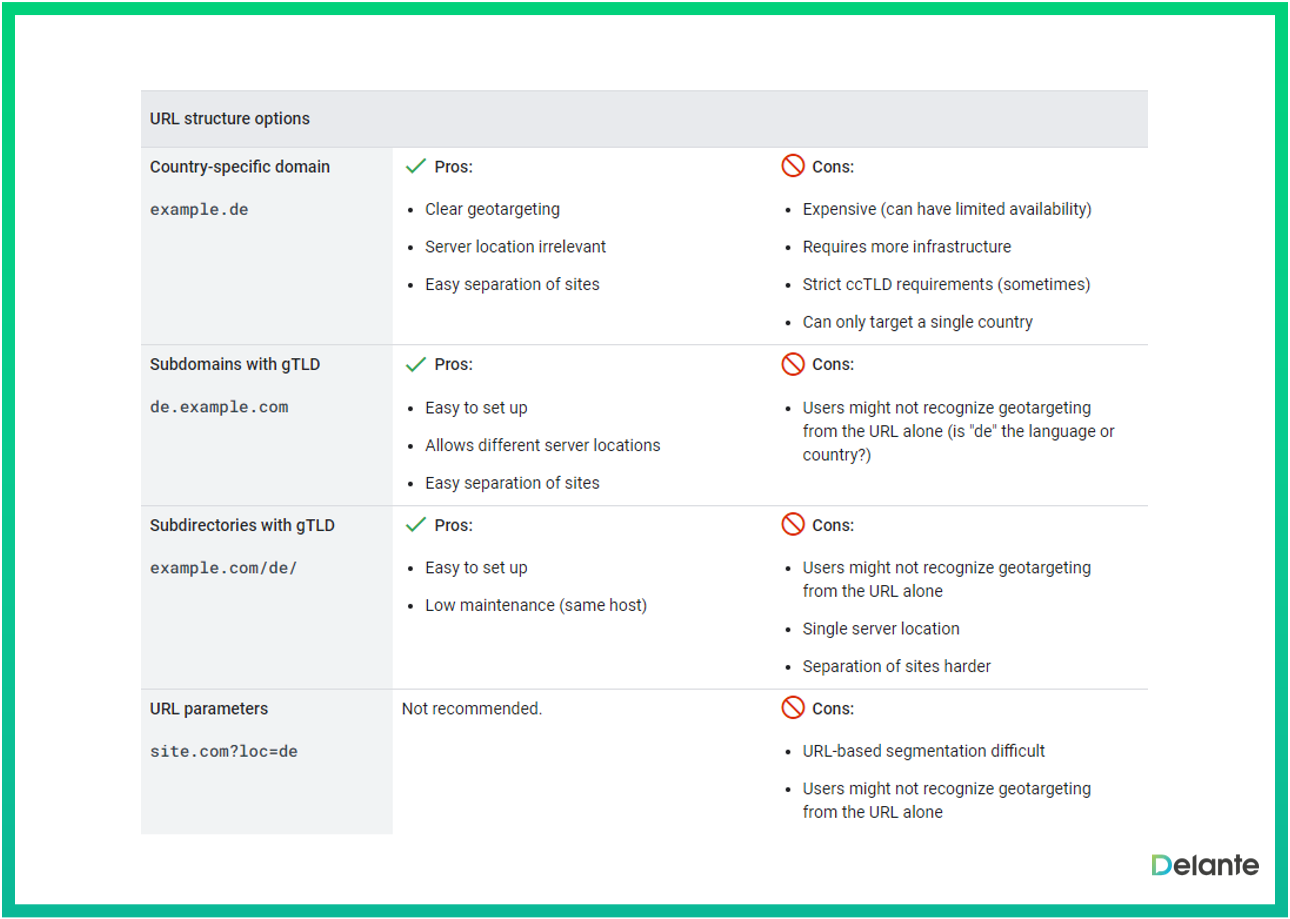Table of contents
Knowing how to do multilanguage SEO is a must-have if you operate in numerous markets.
Having a stunning and engaging website is excellent, but it won’t mean anything if your content is available in a language the audience can’t understand. By adding multilanguage elements to your website, you can open your door to reaching a new audience and growing your organic traffic from search engines.
However, multilanguage SEO isn’t all a bed of roses. It’s complex, time and energy-consuming.
So how to get down to it?
Our multilanguage SEO guide will help you handle the process and tailor the content and communication to different languages and markets.
Why is it worth doing it?
Even though multilanguage SEO requires a bit of planning and comes with a few extra steps, ultimately, it can give you a competitive edge over your market rivals. So, the juice is certainly worth the squeeze!
What Is Multilanguage SEO?
Multilanguage SEO is the optimization of a website for multiple languages.
This can be done by creating separate versions of a website for each language. It’s also possible to use language detection and translation tools to automate the process and present different versions of a website to users speaking different languages.
Multilingual and Multiregional SEO
Multilingual SEO is the practice of optimizing a website for multiple languages. This is done to ensure that the correct language version of a page is served to each user. So, it focuses on countries.
Although these two terms shouldn’t be used interchangeably, they overlap to a certain extent. Therefore, if you’re a company owner that wants to mark their presence in a particular city and country, you’ll need both multilingual and multiregional SEO.
Do you need help with international strategy for your website? Check out our international SEO services!
How to Do Multilingual SEO?
Multilingual SEO is about optimizing your website’s content and technical performance so that it can appear in the search results for users of multiple languages.
As you can guess, adding more languages to your website significantly increases your target audience.
Moreover, targeting your recipients with content in their preferred language makes it easier to address their needs and prevent potential misunderstandings resulting from language or communication differences.
Do you know the saying “when in Rome, do as the Romans do”?
This is also the reason why you should focus on multilingual SEO. By tailoring your content and messages to your target audience, your business will inspire more trust and allow you to compete with local companies.
So, how to do SEO for a multilanguage website?
Plan Your Multilanguage SEO Strategy
The first step is to plan your multilanguage SEO strategy. This means deciding which languages you want to target, and how you will go about optimizing your website’s content and technical performance for these languages.
There are a few things to keep in mind when planning your multilingual SEO strategy:
Research Your Audience
Before you can decide which languages to target, you need to understand your audience:
- Who are they, and where are they located?
- What languages do they speak?
- What are their preferences?
- How do they communicate?
- How much do they spend online on average?
- What affects their decision-making?
Once you have a good understanding of your target audience, you can start to research which languages will be most effective for reaching them.
Choose the Right Language & Location
Once you’ve decided which languages you want to target, you need to make sure you’ve selected the right location. This means choosing the right country or region for each language.
For example, if you’re targeting Spanish speakers in the United States, you would want to target Spanish (United States) instead of just Spanish. This is because there are slight differences in the way Spanish is spoken in different countries, and you want to make sure you’re reaching your target audience with the right language.
You can use tools like Google Keyword Planner and Google Trends to help you choose the right language and location.
Choose the Right Keywords
Keywords are an important part of any SEO strategy, and this is especially true for multilingual SEO. You need to choose the right phrases for each language and location you’re targeting.
To do this, you can use tools like Google Keyword Planner, SEMrush, Ahrefs, or simply Google. They’ll help you find business-specific keywords that are frequently used in a specific location.
Choose the Right Search Engine
Although Google is a real tycoon among search engines, there are countries where other solutions are more popular.
Need an example?
Just think about China. If you want to reach users in this country, you should tailor your strategy to Baidu and its requirements, as it’s the most willingly chosen search engine in this country.
Generally, some of the most popular search engines include Google, Yahoo, and Bing. But there are also many regional search engines, such as Baidu (China), Yandex (Russia), and Naver (South Korea).
Choose the Domain & URL Structure
This point is particularly important.
Why?
Apart from technical aspects, it’s crucial to analyze users’ preferences and behavior. What do we mean by that? There are countries where users are very reluctant to use sites that don’t use their national domains.
These include France and Germany, for example. That’s why proper research is so important because even the best offer and site won’t benefit you if you don’t meet the expectations of your target audience.
What are the available options?
Top-Level Domains
They’re based on using individual top-level domains for targeting different audiences (including using ccTLDs which are top-level domains reserved typically for a typical country).
Need an example? You can purchase the .fr domain for targeting French-speaking users in France and .uk for English-speaking users in England, .de for German-speaking users in Germany, and .us for English-speaking users in the United States.
While selecting specific country-level domains is effective for international targeting based on region, the website still needs to take further steps to indicate to Google the appropriate languages for users. Plus, from an SEO and analytics tracking perspective, things can get very messy when you have multiple top-level domains.
Subdirectories
They serve as a way to make URLs unique within your existing sitemap while having the ability to serve different markets and languages from your domain. Subdirectories function as pathways within the folder structure of your website.
While subdomains are treated separately from your primary domain, subdirectories are extensions of your site’s domain. Each of the subdirectories can efficiently pass the ranking potential of links from one directory or folder structure to the others.
This makes them the ideal option in most cases for managing SEO for targeting regions/countries, languages, or both.
Subdomains
Subdomains serve as a way to organize your site to establish different content types that are separate from your root domain. However, this option isn’t particularly popular because the authority and trust from external links aren’t passed to different subdomains as efficiently as in the case of subdirectories.
Below you can see the pros and cons for each of these primary URL structure options:
Regardless of the URL structure chosen, structuring your multilocation and multilingual SEO incorrectly can result in ranking issues across the entire website.
Want to learn more about managing multiregional and multilingual sites? Check out official Google resources.
Sounds complicated? Choose our international SEO services and we will take care of everything for you!
Create Multiple Language Versions of Content
Once the site architecture and URL structure are settled, it’s time to create multiple language versions of your content.
Why should you do it?
A dedicated URL for your translated page can tell search engines that the page corresponds to a specific language so that it knows which one should be shown to speakers of different languages.
Note: Google doesn’t recommend setting up automatic redirects based on a user’s default language. Instead, Google guidelines tell it’s better to offer on-page links to allow users to switch to a different language. However, if you include these on-page links, remember that flags don’t represent languages; rather, the flags only represent nations. So, please try to avoid using flag icons next to the language links.
Should You Translate or Create New Content?
Creating new website content in another language can be quite challenging if it isn’t your mother tongue.
If you want to create content in-house, you need someone fluent in both languages. It’s unacceptable to use Google Translate or another machine translator.
Why?
Google can detect automatically translated content and decrease its position and visibility in the search results.
Besides, such tools still make too many errors and can lead to numerous misunderstandings. They can’t localize the content and don’t take into account cultural differences.
What about creating new content from scratch for each language version of your website?
It’s also a great option. It may take longer and require more work, but it can be the most beneficial solution, especially if there are substantial cultural or language differences.
Use Hreflang Tags
In multilingual SEO, it’s essential to make it as easy for Google to understand the content on your website. While search engine robots can see the visible content on the page and use it to determine the language, it’s better to use proper meta tags to inform Google about the intended language.
Adding Hreflang tags to your website is the best way to tell search engines how to distinguish which URLs are appropriate for each language on the website.
Therefore, proper implementation of hreflang tags helps Google to categorize pages with different languages, regional content variations, and a combination of language and regional variations.
How to do it?
You can add hreflangs to your website using link elements in the <head> section, HTTP headers, or an XML sitemap.
What should hreflang tags look like? Examples:
- de: German language content, independent of region
- en-GB: English language content, for Great Britain users
- de-ES: German language content, for users in Spain
Don’t Mix Languages and Remember to Translate Metadata
In addition to translating the on-page content, it’s also crucial to update your metadata, meaning titles and meta descriptions, as well as all elements that are important for users (privacy policy, sidebars, pop-ups, banners, and more).
Regardless of the path you choose, you shouldn’t mix different languages on the same page. Having part of the content in one language and another part in the other can deter users and have a negative impact on their engagement.
So, remember to translate all website elements, including headers, footers, sidebars, or user comment sections. If you don’t have time to do it manually, there are plugins that can help you translate user-generated content with a few clicks.
Create a Sitemap
A sitemap is a must-have in every SEO strategy, including a multilingual one. This is because it helps search engines crawl and index your website more effectively.
If you’re using a CMS like WordPress, you can use a plugin like Yoast SEO to automatically generate a sitemap.
A multilingual sitemap doesn’t differ much from a traditional one. However, it should include additional information about each <loc> entry. According to Google, it’s recommended to add an <xhtml:link> for every language variation of each content piece.
So, if your website is available in German and French, you should have two <xhtml:link> entries for <loc> entries.
Use Local Link Building Techniques
It’s not a surprise that link building techniques differ from country to country. Methods that work in Germany may not be effective in France and the other way around.
If you want to enter a foreign market, you should focus on obtaining quality backlinks to your page.
Why?
Because links are one of the main ways that search engines determine the authority of a website.
To build local links, you can participate in local events, collaborate with other local businesses, try influencer marketing, or guest posting. You can also use tools like Ahrefs and Moz to find local link building opportunities.
Review Your Results and Adjust Your Strategy
Last but not least, it’s crucial to monitor your progress and effects to see if the implemented multilingual SEO strategy is working.
For this purpose, you can use tools like Google Analytics, Google Search Console, SEMrush, and Ahrefs. They’ll help you monitor your key performance indicators such as traffic, website visibility, or positions in the search results.
If you have enough resources, you should also use A/B testing to experiment with different tactics and see what works best for your website.
Download the free International SEO checklist and boost your global visibility!
Why Is Multilanguage Website SEO Important?
Well-executed, multilanguage SEO tactics can help you to connect with a new target audience, and improve your visibility in the SERPs.
With the right strategy, you get a chance to compete with local companies and win the hearts of potential buyers from various countries. Thanks to it, you maximize your chance of success and use your budget more efficiently.
Join Our Newsletter
Common Mistakes in Multilanguage SEO
As it’s been already mentioned, multilanguage SEO can be really complex. Especially, if you don’t have appropriate experience in the field.
What are the most common mistakes in SEO for a multilanguage website and why should you avoid them?
Automatically Redirecting Users to a Specific Version Based on Their Geolocation
One of the most common mistakes is automatically redirecting users to a specific version of the website based on their geolocation.
For example, imagine that a user from the United States visits your website. They’re automatically redirected to the English version of the website. However, this might not be what they’re looking for, because they come from Spain.
Consequently, users may want to access the Spanish version of the website, but because they’re automatically redirected to the English version, they may leave your site and find it unintuitive.
This will not only result in a higher bounce rate but will also hurt your SEO as Google will think that your website is not relevant for the user’s search query.
Automatic Content Translations
Automatic content translations aren’t something you should go for. While this might save you some time, it’s not the most accurate and relevant way to translate your descriptions, texts, and articles.
Consequently, users seeing such poorly translated content will quickly leave the site. Moreover, they may consider your website unreliable and not trustworthy. Properly translated on-page content is a must-have if you want to compete with local companies.
Apart from that, it’s worth keeping in mind that Google does better and better at recognizing automatically generated and translated content. The search engine rewards websites with unique, valuable texts. If you want to be one of them, take your time to translate your page content properly.
Using the Same URL for Each Language Version
If you want your website to be successful in different countries, you should use different URLs for each language version.
This will help you target users in specific countries and regions. Moreover, it’ll show Google that your website is relevant for users from a particular country which will have a positive impact on your rankings, and people’s trust levels.
Translating Keywords Without Research on Specific Language
Just because a word is popular in one language, it doesn’t mean it will be popular in another. For this reason, it’s crucial to do separate keyword research for each language, and country you want to target.
This way, you’ll be able to tailor your strategy to the requirements and needs of the recipients. Use available tools like Keyword Planner, SEMrush, or Ahrefs to better understand the target market, users, their needs, and preferences.
Thanks to it, you’ll be able to select the right long-tail phrases that will expand your reach, boost website traffic and conversions.
SEO for the Multilanguage Website – The Takeaway
Now you know how to do multilanguage SEO. As you can see, the process can be tricky. However, if you follow our best practices and avoid the most common mistakes, you’ll be one step closer to success.
Need help with implementing technical elements, doing keyword research, or devising the right strategy? Contact us! Our multilingual SEO experts will be happy to assist you!
This is an update of an article published in 2021.







 (7 votes, average: 3.86 out of 5)
(7 votes, average: 3.86 out of 5)![How to Create an Ad That Will STAND Out? + [VIDEO]](jpg/how-to-create-ads-that-stand-out.jpg)










As someone who’s working in international content agency Contenteam, I agree with the importance of all those steps. I’d add that it’s not a good practice for a website, but also for all kinds of mobile apps and online games. Our personal hack is to hire native speaker copywriters for creating the content for a specific country or region. Such step helps to avoid cultural mistakes and inappropriate associations.